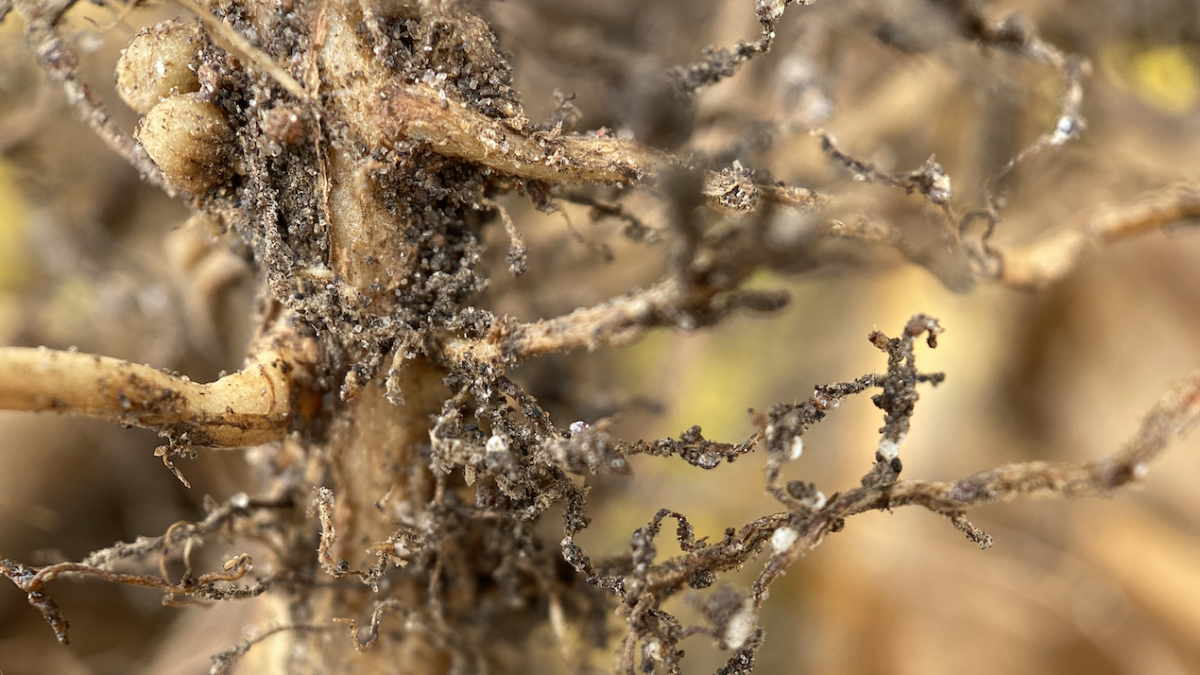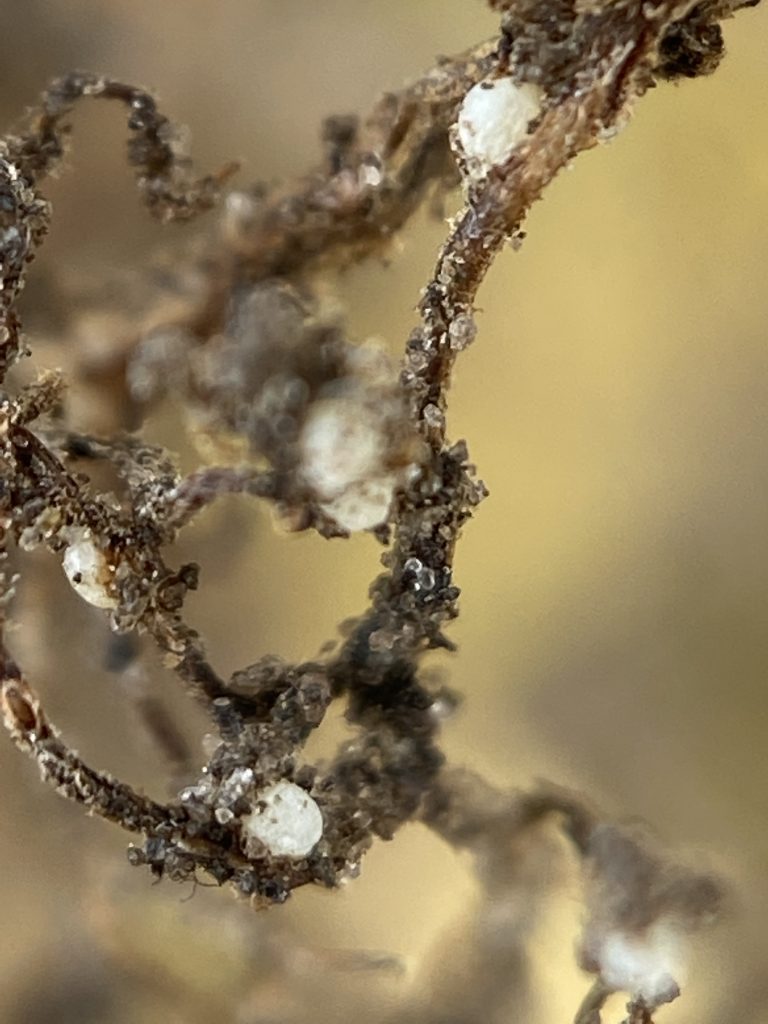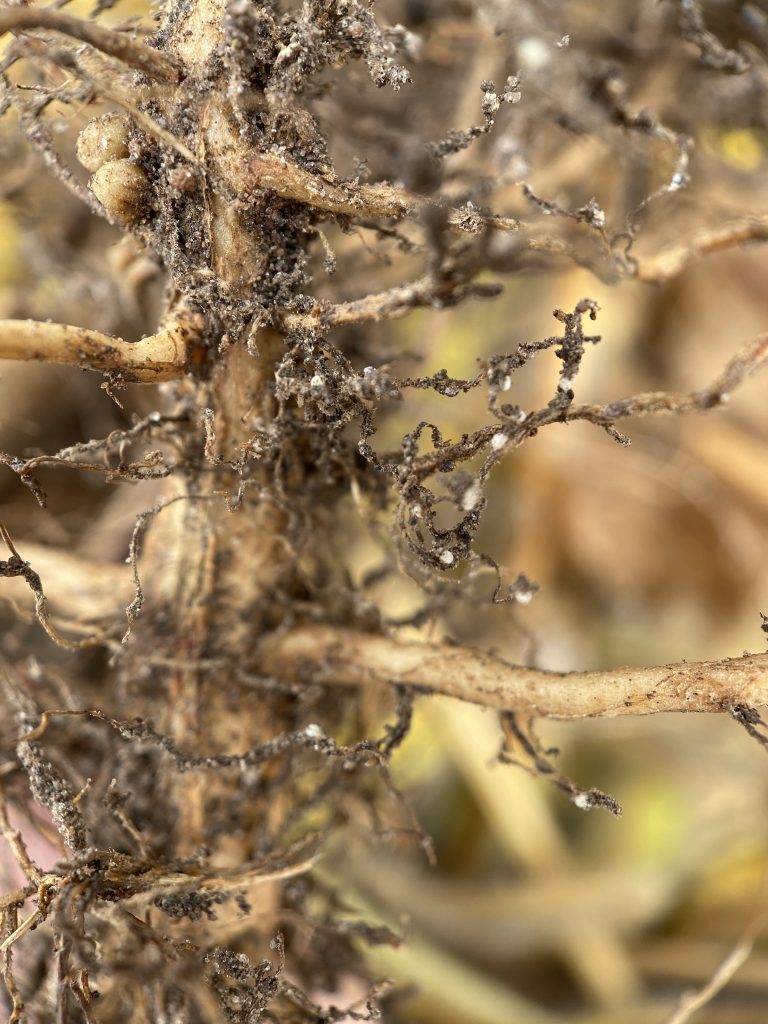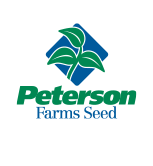Spooky Soybean Cyst. Test this Fall to Know Your Fields

A monster of a soybean pest could be in your fields right now, causing devastating yield loss. Soybean cyst nematode (SCN) continues to be a relevant topic across the tri-state region, and a nightmare for many farmers. October isn’t just a convenient time to discuss SCN – it’s also the perfect time to test your fields.

Cysts related to SCN are visible as small white cysts on the roots, especially in severe infestations.
Soybean cyst nematode is an economically important soybean pest. Nematodes are a type of roundworm that are normally a sign of healthy soils, but in certain species – SCN in particular – they are bad news. According to the University of Minnesota Extension, SCN eggs are transferred from field to field by windborne dust, soil water runoff, wildlife, or dirty equipment.
Eggs hatch in the spring after the female nematode burrows into soybean roots to feed and develop eggs. The female will swell and form a round cyst filled with eggs, similar in appearance to nodules but much smaller. Severe cyst infestations are visible with the naked eye, but otherwise can only be seen with a hand lens or microscope.

SCN cysts are much smaller than root nodules. In the top left of this picture you can see a normal nodule, with the white specks being SCN.
Damage caused by SCN can be difficult to identify and easy to ignore. Many times, SCN damage may look like IDC or waterlogged conditions. The real kicker? You might not see visual symptoms of cyst but still suffer significant yield loss. It’s estimated that by the time you see above-ground symptoms, 30% or more of your yield is already gone. In addition, SCN can hide behind other issues, like drought or charcoal rot. So, if we can’t always see it, how do we find it, and, more importantly, how can it be managed?
If you see dead spots in your field, you should test for SCN. When doing so, take samples from multiple locations within the field, ensuring you include high-risk areas like field entrances, waterways, and any locations where you have observed lower yields or plant health issues. SCN populations will be easiest to detect following soybeans, but samples can be taken from any crop. Test results will help you identify and monitor SCN severity, so even if you have tested in previous years, it is useful to monitor population levels from year to year.
The entire tri-state region has some level of infection. Establishing a baseline early before levels get out of control is critical and will build some history for future decision making. There have been many instances where a grower doesn’t think they have infection, then tests a couple of fields and the results come back anywhere from 4,000-8,000, which is a significant yield reduction level. This fall, a west central MN field had results come back from 40-160K without any previous knowledge of having infection.
With that in mind, it pays to be vigilant. Free testing programs and several labs around the region will run inexpensive tests to establish levels. In North Dakota, kits sponsored by the ND Soybean Council are available through County Extension offices. Most soil labs in SD, MN, and ND also offer cyst testing. Midwest Labs and Agvise are two of the most popular labs in our area. One convenient option is to have samples taken at the same time as your normal fertility sampling. At Peterson Farms Seed, we believe it’s crucial to sample the farm at least once every three to five years.
Unfortunately, when SCN is found, there’s no way to eradicate it. The best we can do is build management plans to keep populations at a manageable level.
First, look at crop rotation. When very high levels of cyst (10,000+) have been detected, I advise lengthening crop rotation. Not planting soybeans for a few years will bring down cyst populations and prevent populations from exploding. DO NOT ENTER A BEAN-ON-BEAN ROTATION.
Another useful tool in controlling SCN populations is soybean variety selection. One of the buzzwords you have likely heard in the last few years is Peking. While it has been around for a while, we expect varieties carrying the Peking gene to be coming to market faster with “marker-assisted breeding” making it easier to identify varieties that contain resistance. With the addition of Peking, there are now two sources of resistance in the market, with the other being PI88788.
It is extremely important to remember that, just because we have a new resistance gene on the market, it is not a silver bullet. It’s critical to rotate these sources of resistance – don’t use only Peking or PI88788. Over-reliance on one source could lead to the development of resistant SCN populations!
Seed treatments offering early season protection are also available. In high-cyst fields, a seed treatment will protect seedlings until their natural resistance can kick in and protect the crop. Our Peterson Select treatments have the option of adding in a nematicide. Talk with your local PFS dealer to learn more.
Below is the current North Dakota map showing the battlefield as it continues to spread across the state.












